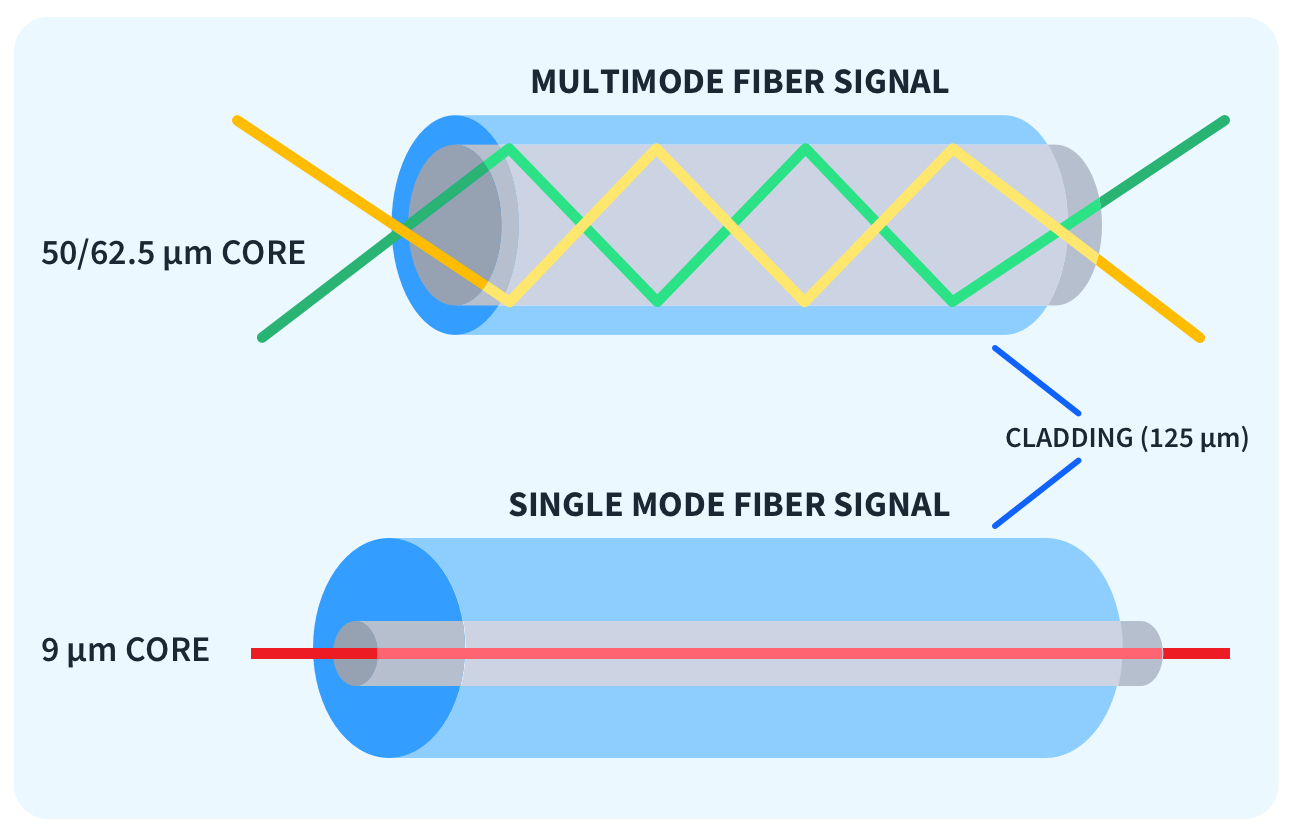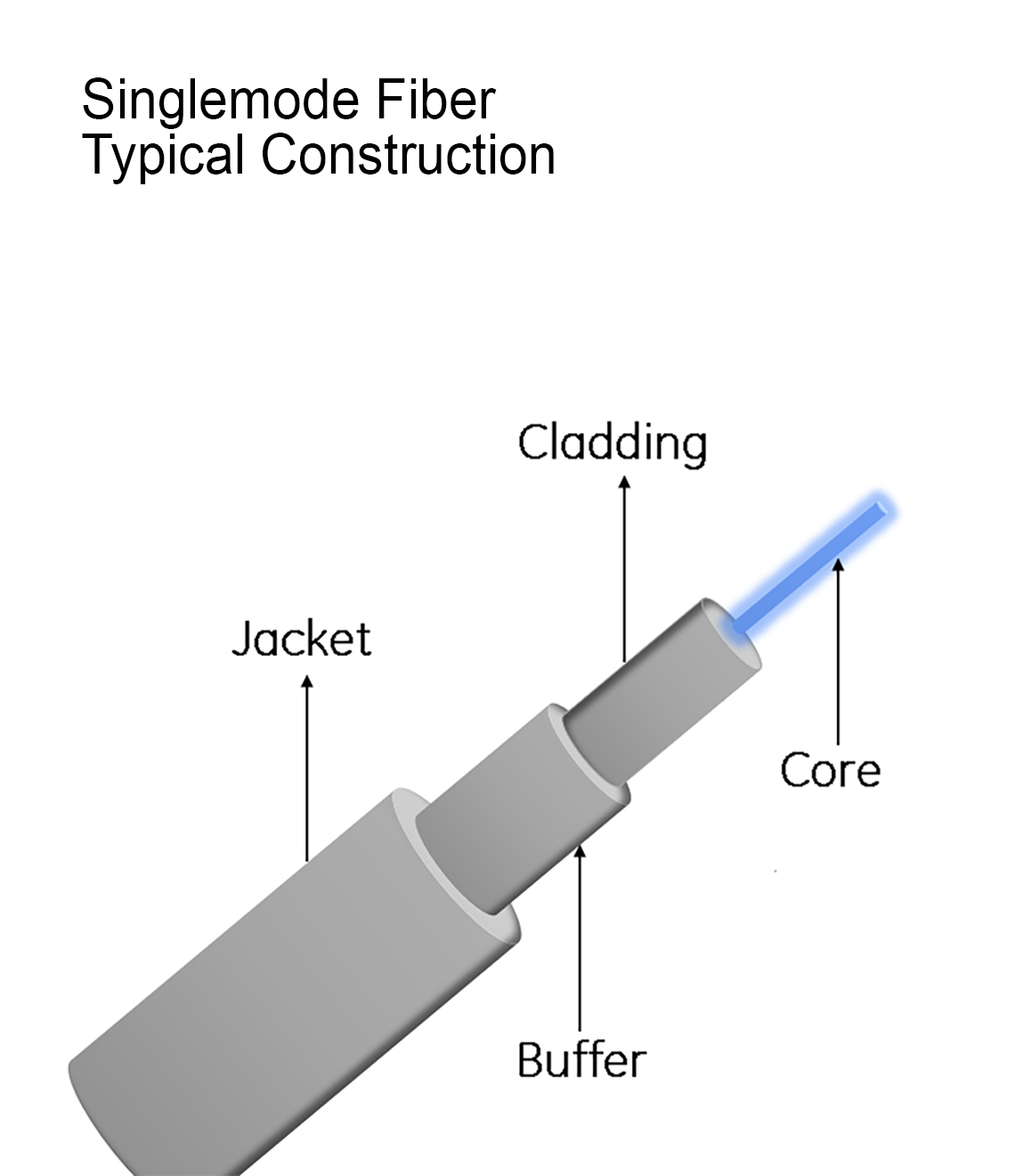
Source: CBT Nuggets
Understanding Single-mode Optical Fibers
Single-mode optical fibers are a key component in modern telecommunications, enabling high-speed data transmission over long distances. This article explores what single-mode fibers are, how they are designed, and their applications in various fields.
What are Single-mode Fibers?
Single-mode fibers, also known as monomode fibers, are optical fibers designed to support only a single propagation mode per polarization direction at a given wavelength. This means they can transmit light without interference from other modes, making them ideal for long-distance communication.
Design and Mode Structure
Single-mode fibers typically have a small core diameter, usually a few micrometers, and a small refractive index difference between the core and cladding. This design ensures that only the fundamental mode (LP01) is supported, preventing higher-order modes from propagating. The mode radius is typically a few microns, although large mode area fibers with larger mode areas are also available.
Fabrication and Standards
The fabrication of single-mode fibers involves precise control over the core diameter and refractive index profile. The International Telecommunications Union (ITU) has established several standards for single-mode fibers, such as G.652, which defines the characteristics of standard single-mode optical fibers used in telecommunications.
Light Propagation and Launch Conditions
Efficiently launching light into a single-mode fiber requires precise alignment of the light source with the fiber’s core. The light source must have a high beam quality and be focused correctly at the fiber’s input end. Any misalignment can result in reduced coupling efficiency.
Propagation in Non-ideal Conditions
When light is launched into a single-mode fiber under non-ideal conditions, some light may initially propagate in cladding modes. However, these modes are attenuated quickly, leaving mostly light in the guided mode. This property is advantageous for long-distance communication, as it minimizes signal loss.
Applications of Single-mode Fibers
Single-mode fibers are predominantly used in optical fiber communications, particularly for long-haul data transmission. Their ability to transmit data over long distances with minimal signal loss makes them ideal for telecommunications networks. Additionally, they find applications in nonlinear devices and fiber amplifiers.
Single-mode vs. Multimode Fibers
While single-mode fibers are preferred for long-distance communication due to their lower propagation losses and lack of intermodal dispersion, multimode fibers are often used for short-distance indoor applications. This is because multimode fibers can use cheaper light-emitting diodes instead of laser diodes, reducing costs.
Conclusion
Single-mode optical fibers are crucial in the telecommunications industry, providing reliable and efficient data transmission over long distances. Their unique design and mode structure ensure minimal signal loss and high data rates, making them indispensable in modern communication networks.

Source: www.cbo-it.de
Feel free to comment your thoughts.



